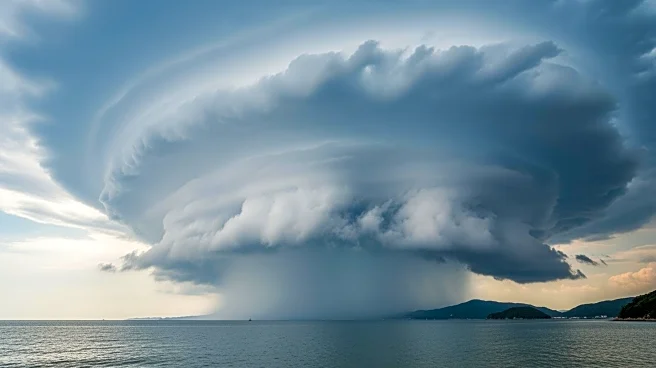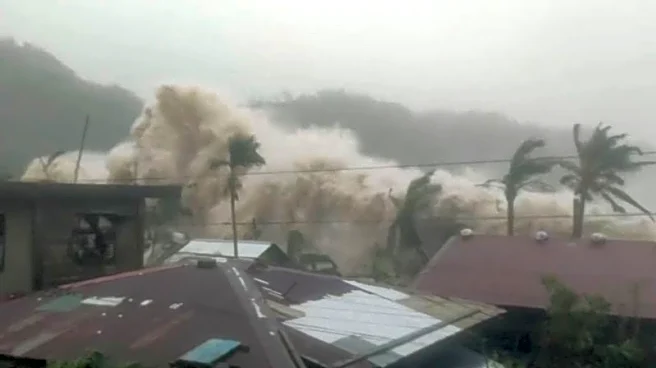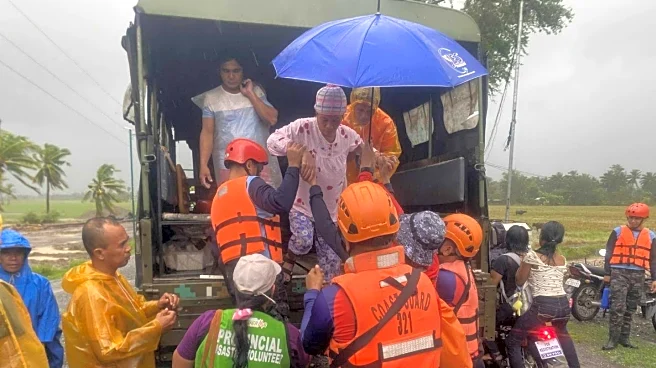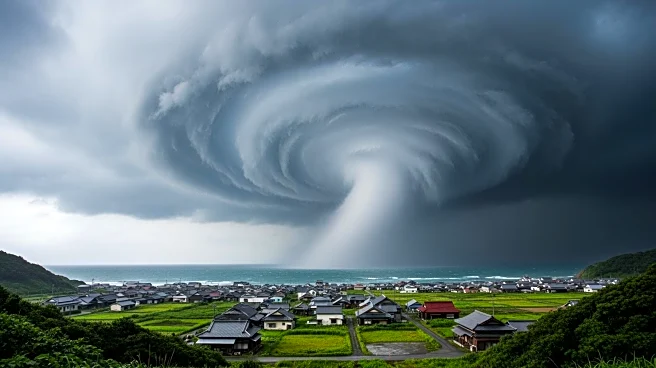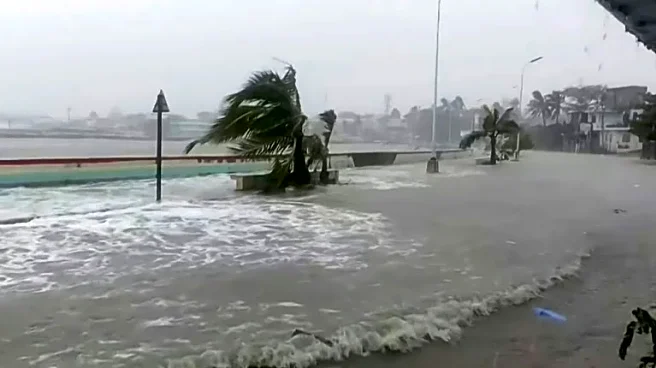What's Happening?
Typhoon Fung-Wong, locally known as Uwan, struck the northeastern Philippines, causing significant flooding and damage. The storm, initially packing winds of 185 kilometers per hour, equivalent to a Category
3 hurricane, has weakened to 130 kilometers per hour as it moves over the West Philippine Sea. President Ferdinand Marcos Jr. suspended government operations and classes in affected regions. The typhoon damaged nearly 1,100 homes, flooded 132 areas, and stranded around 6,200 passengers at ports. Approximately 1.4 million people were evacuated, and six fatalities have been reported. The storm is expected to make landfall in northern Taiwan later this week.
Why It's Important?
The impact of Typhoon Fung-Wong highlights the vulnerability of the Philippines to natural disasters, with this being the 21st cyclone to hit the country this year. The series of storms has raised concerns about the effectiveness of government flood control projects, amid public outrage over corruption scandals. The typhoon's approach to Taiwan necessitates preparedness, as President Lai Ching-te has urged caution, especially in areas with red alerts. The storm's trajectory and intensity could affect infrastructure and necessitate emergency responses, impacting both countries' economies and public safety.
What's Next?
As Typhoon Fung-Wong approaches Taiwan, local authorities are preparing for potential impacts. Taiwan Power Co. has mobilized staff for grid maintenance and repairs. The storm's unusual path requires vigilance, particularly in Hualien County, where evacuation orders are in place. The response in Taiwan will focus on minimizing damage and ensuring public safety, while the Philippines continues recovery efforts from the storm's aftermath.
